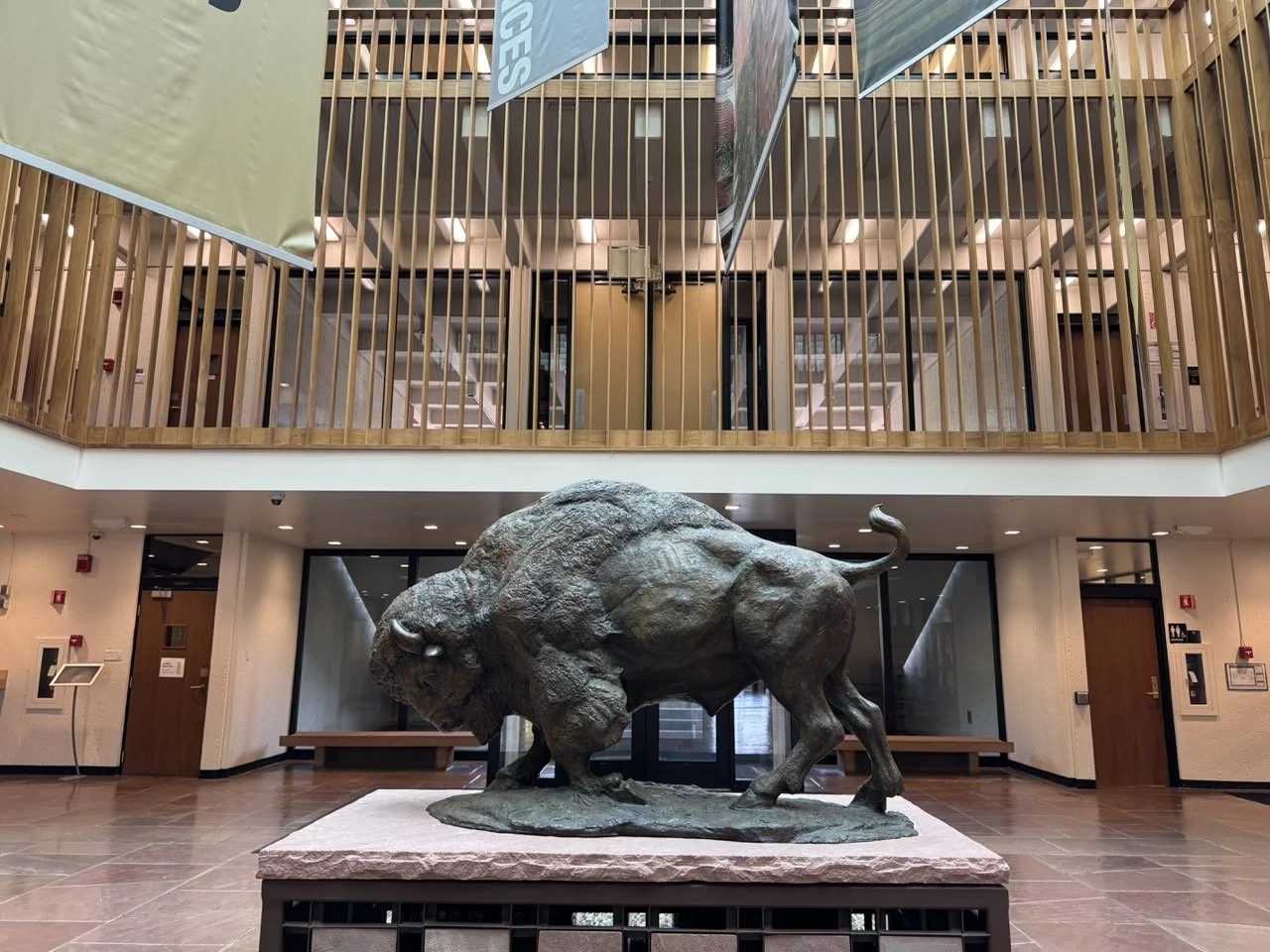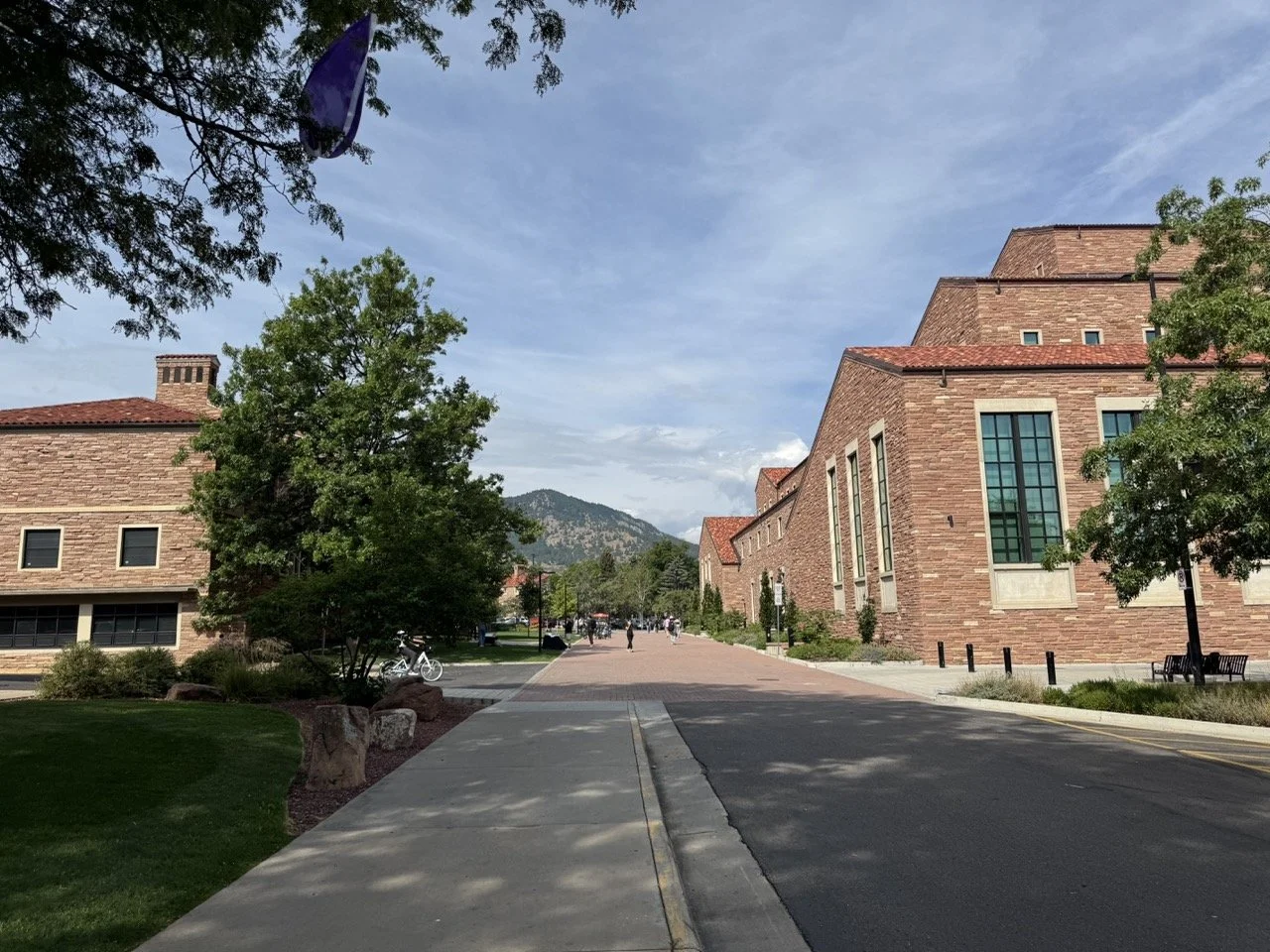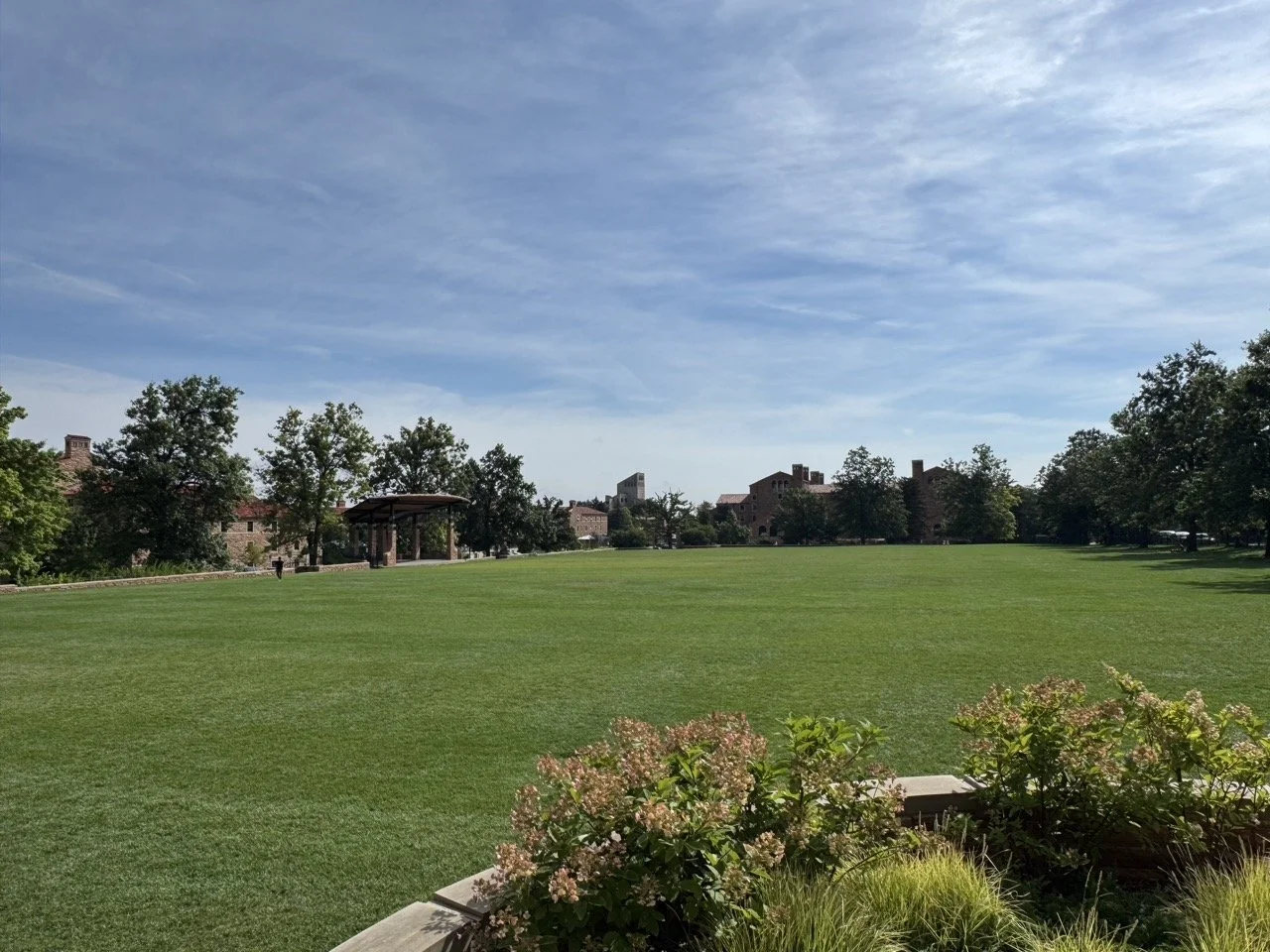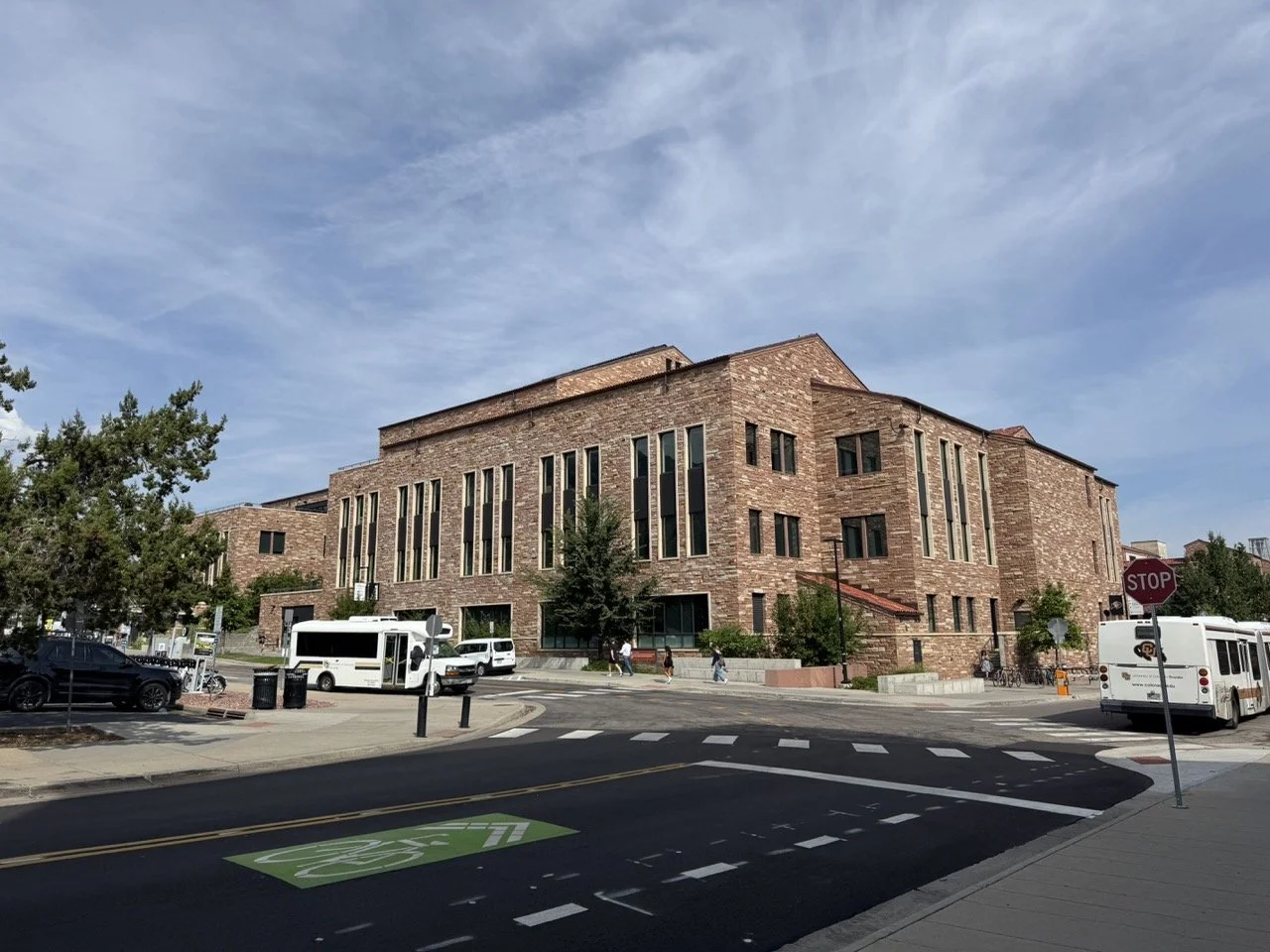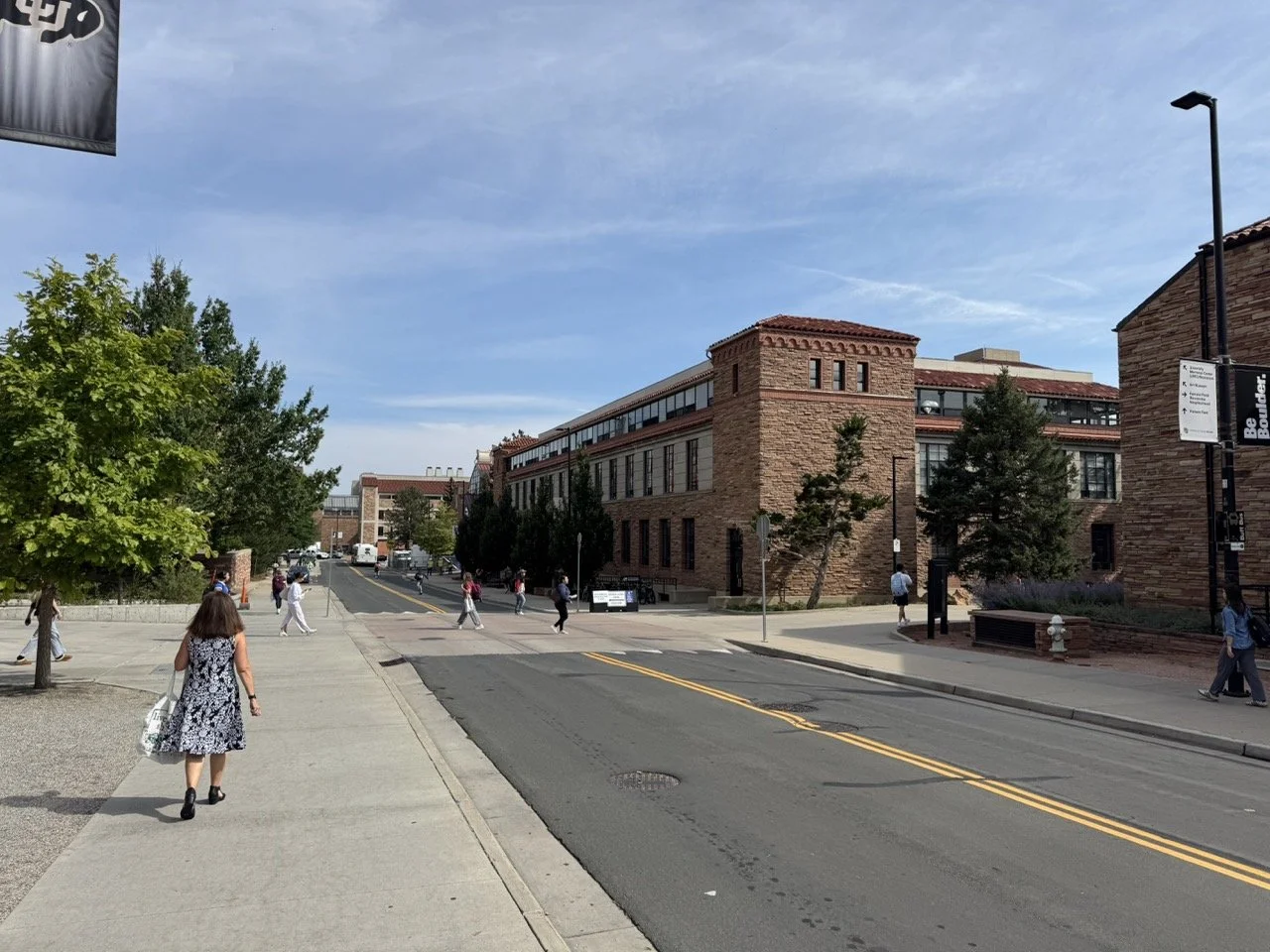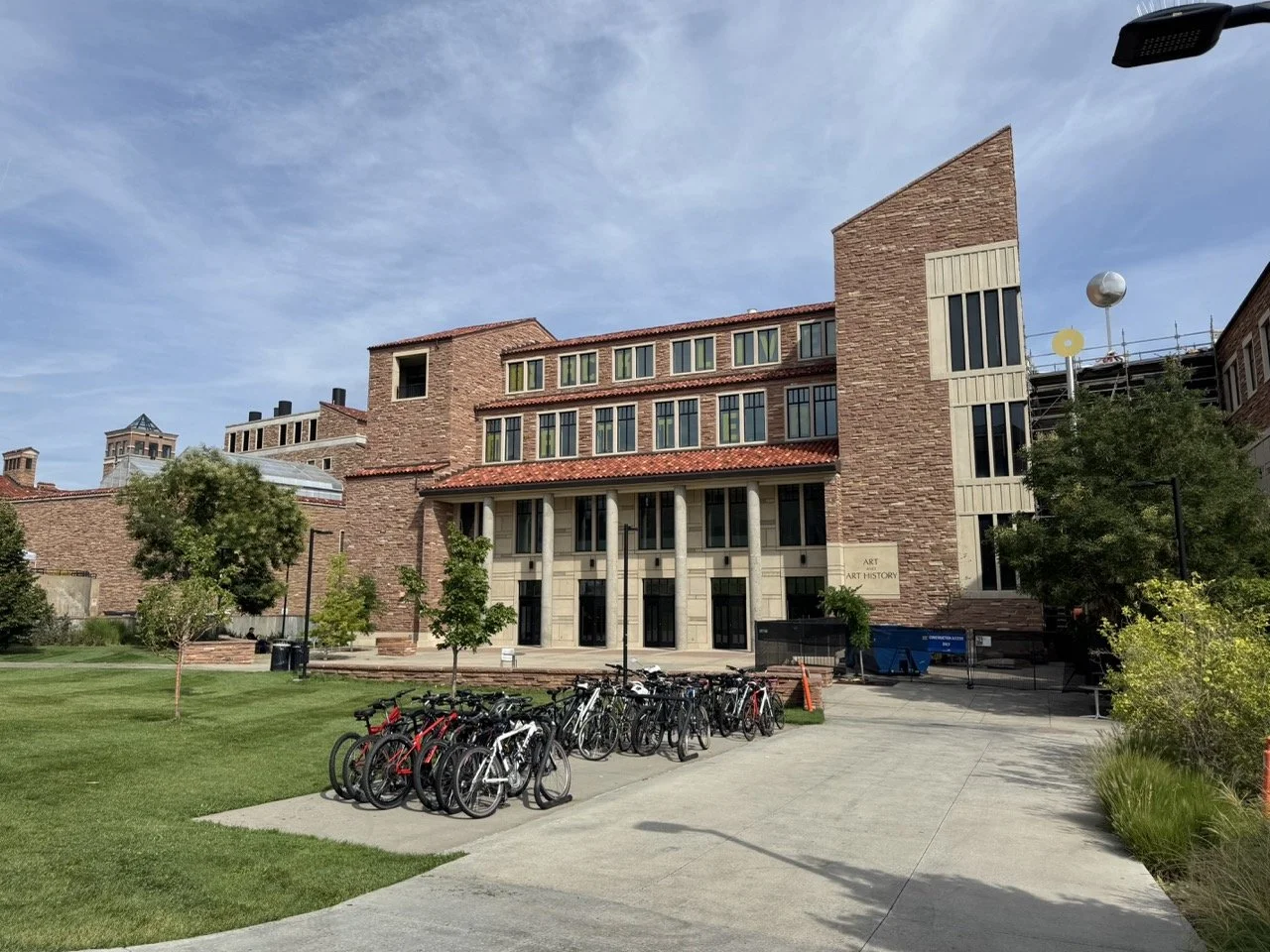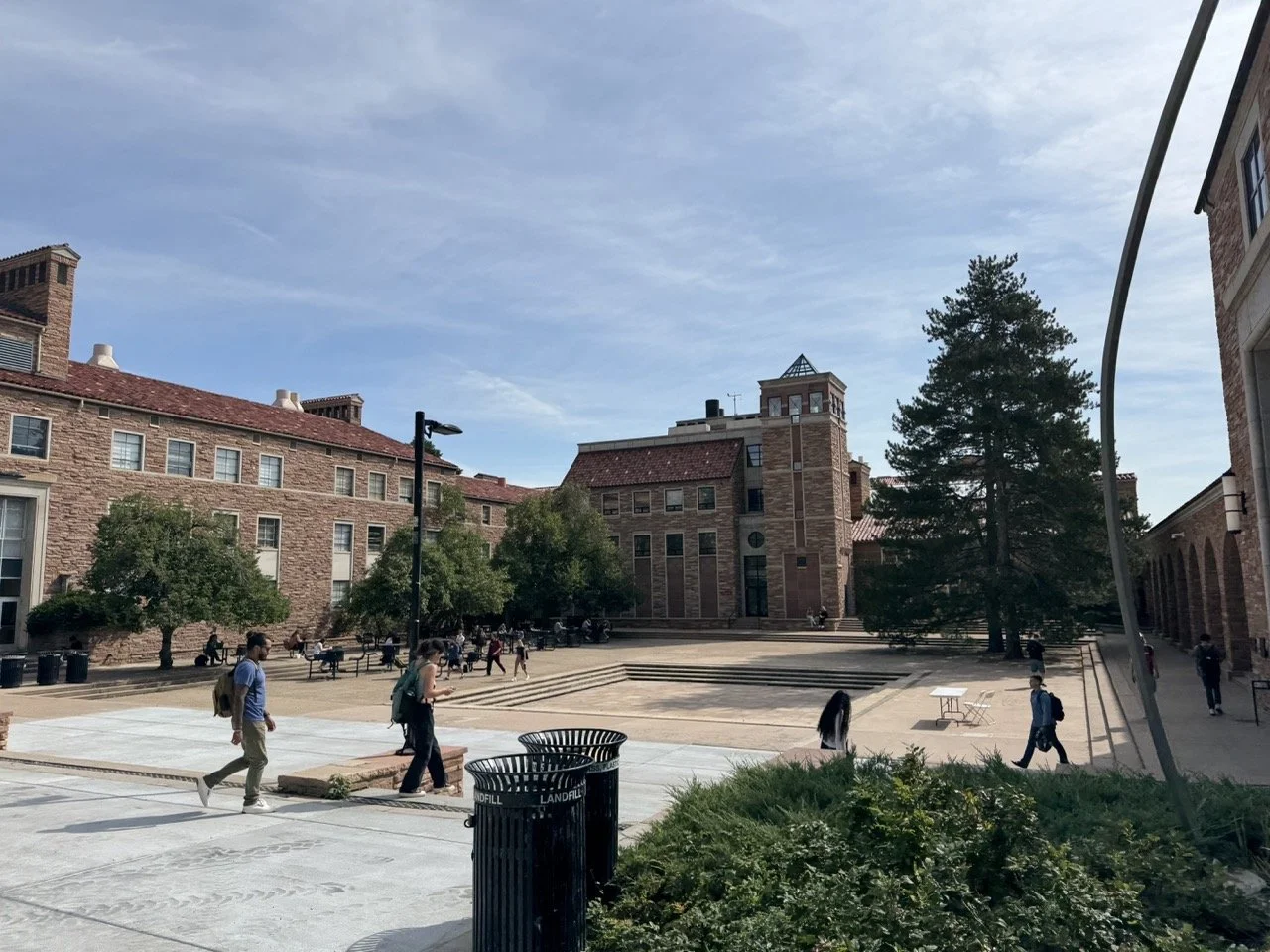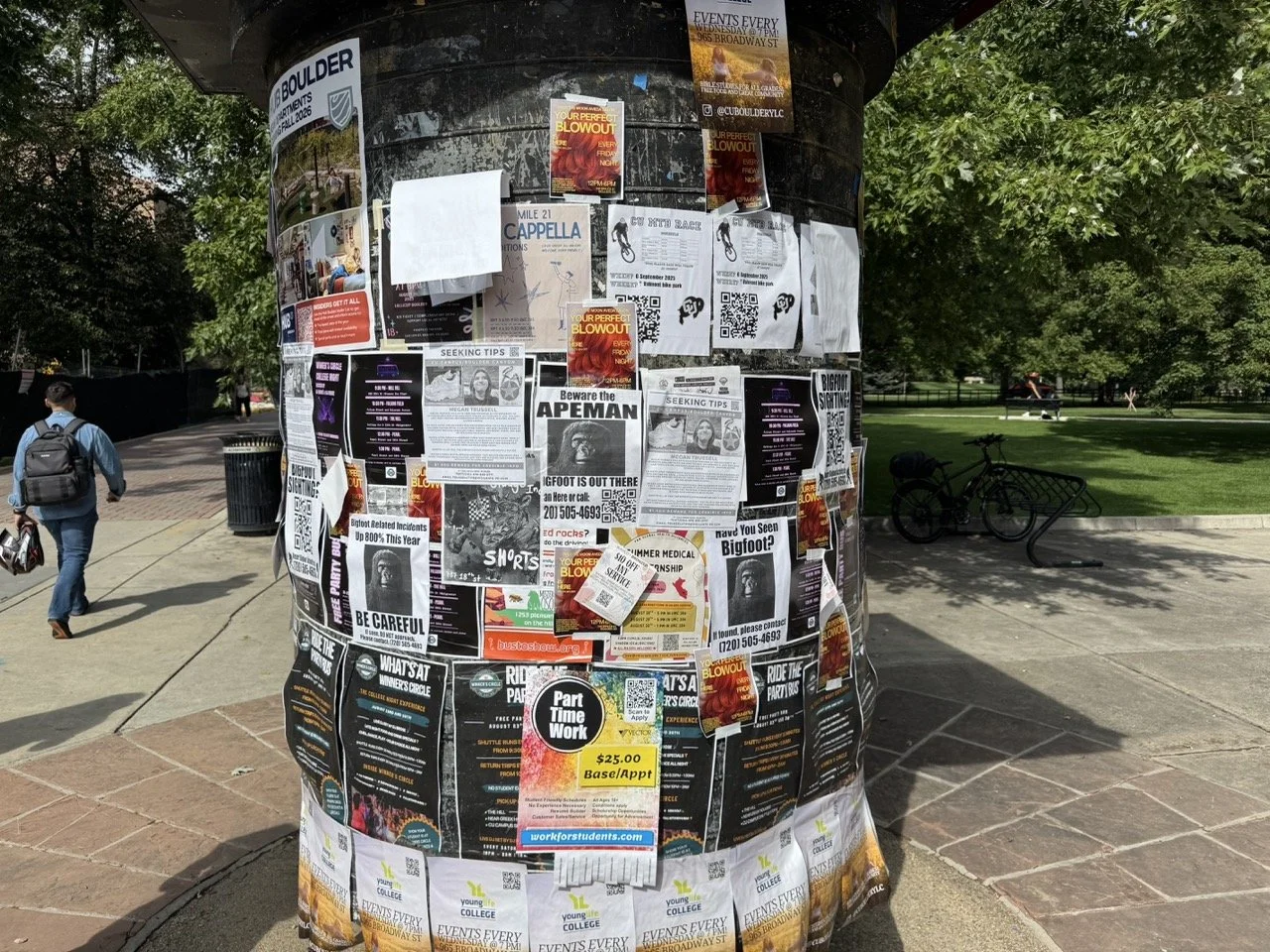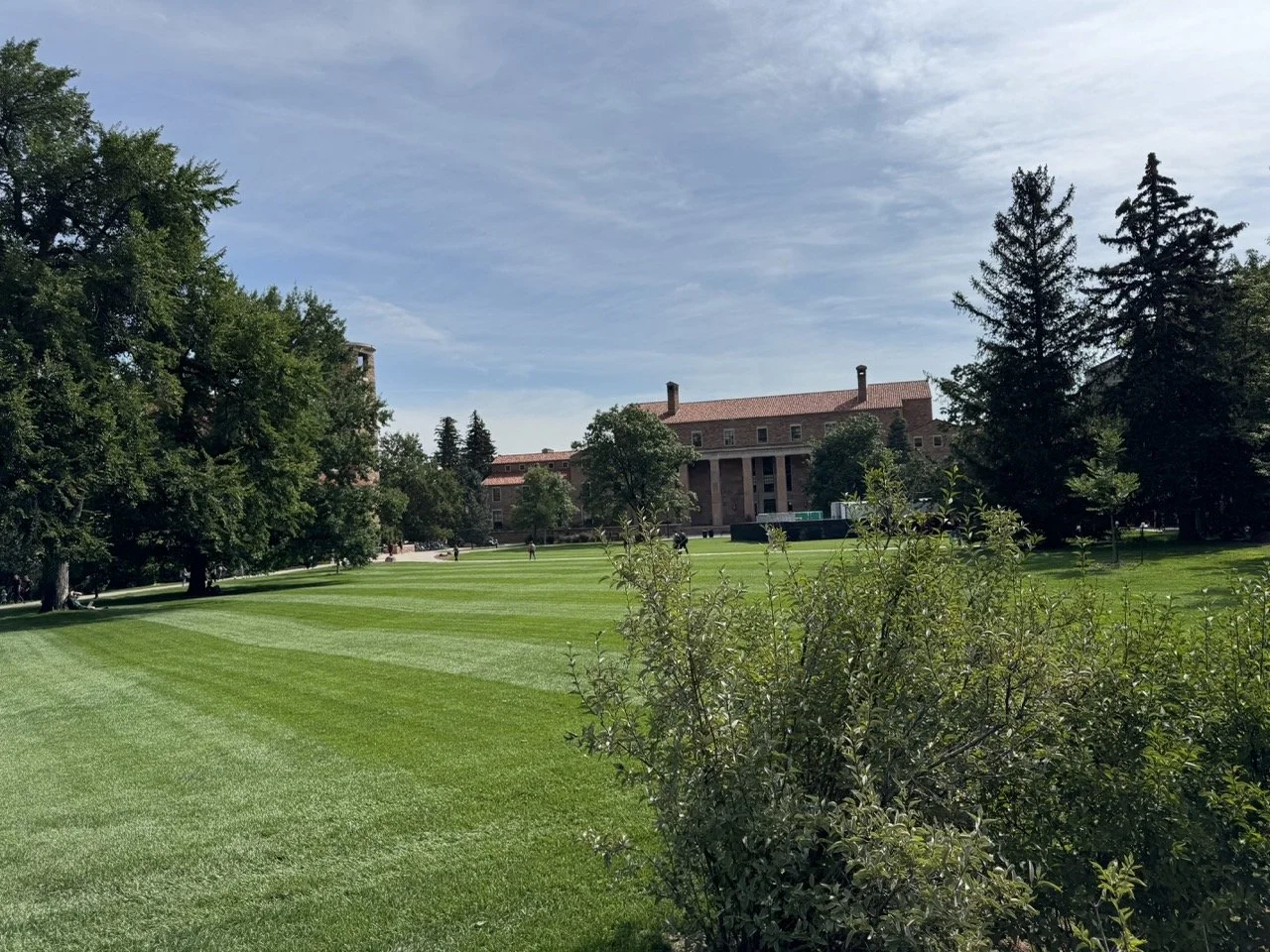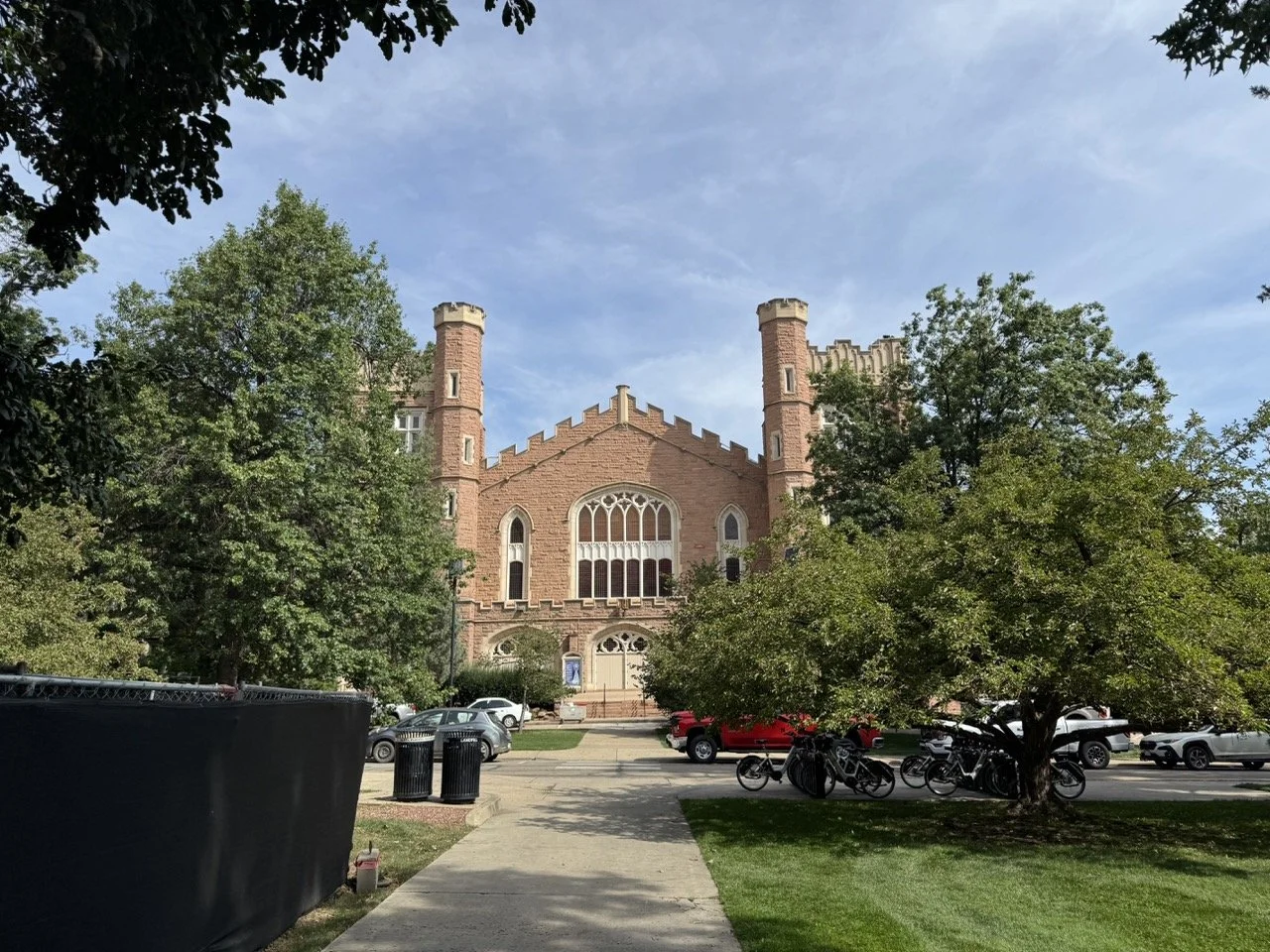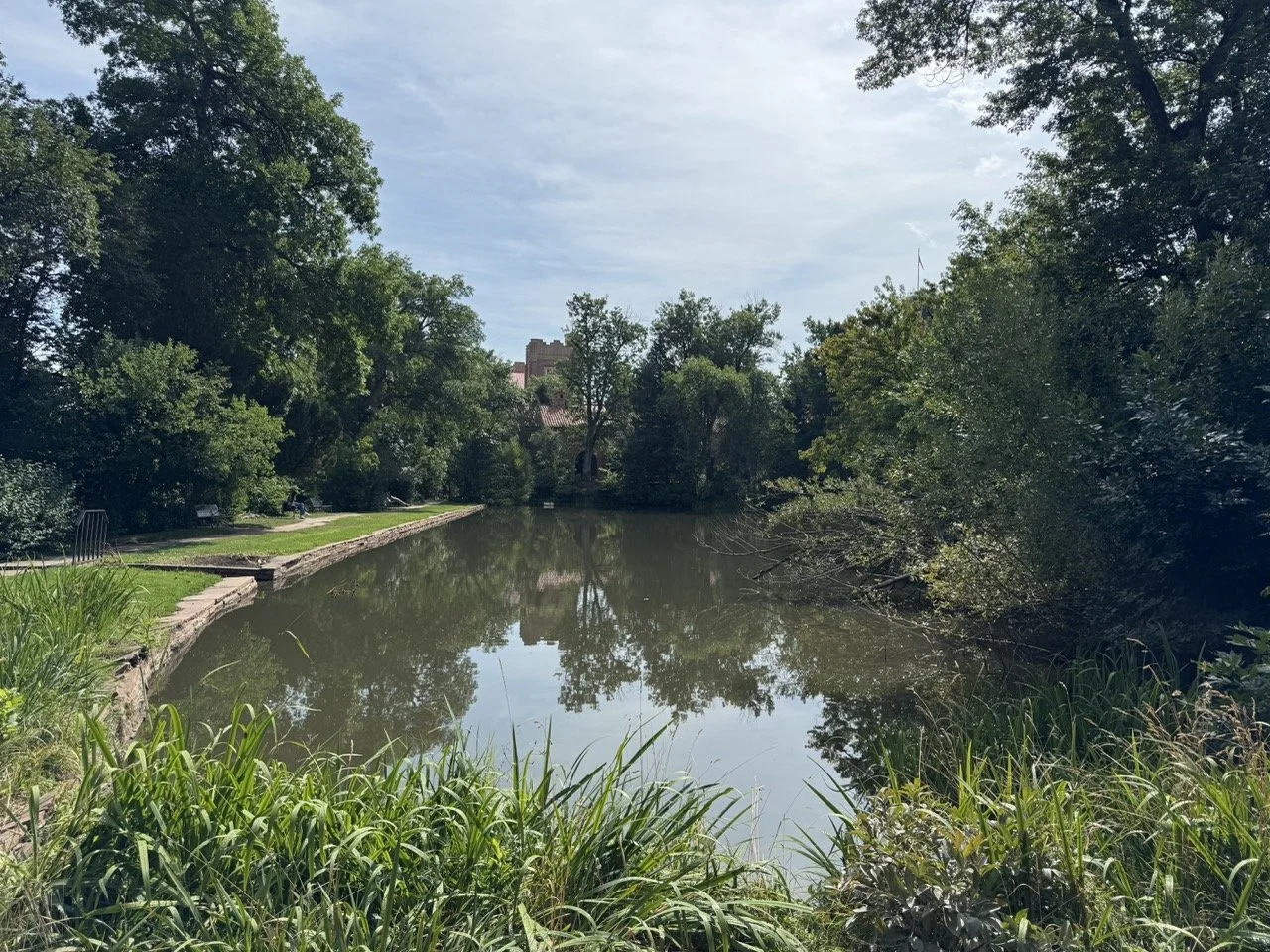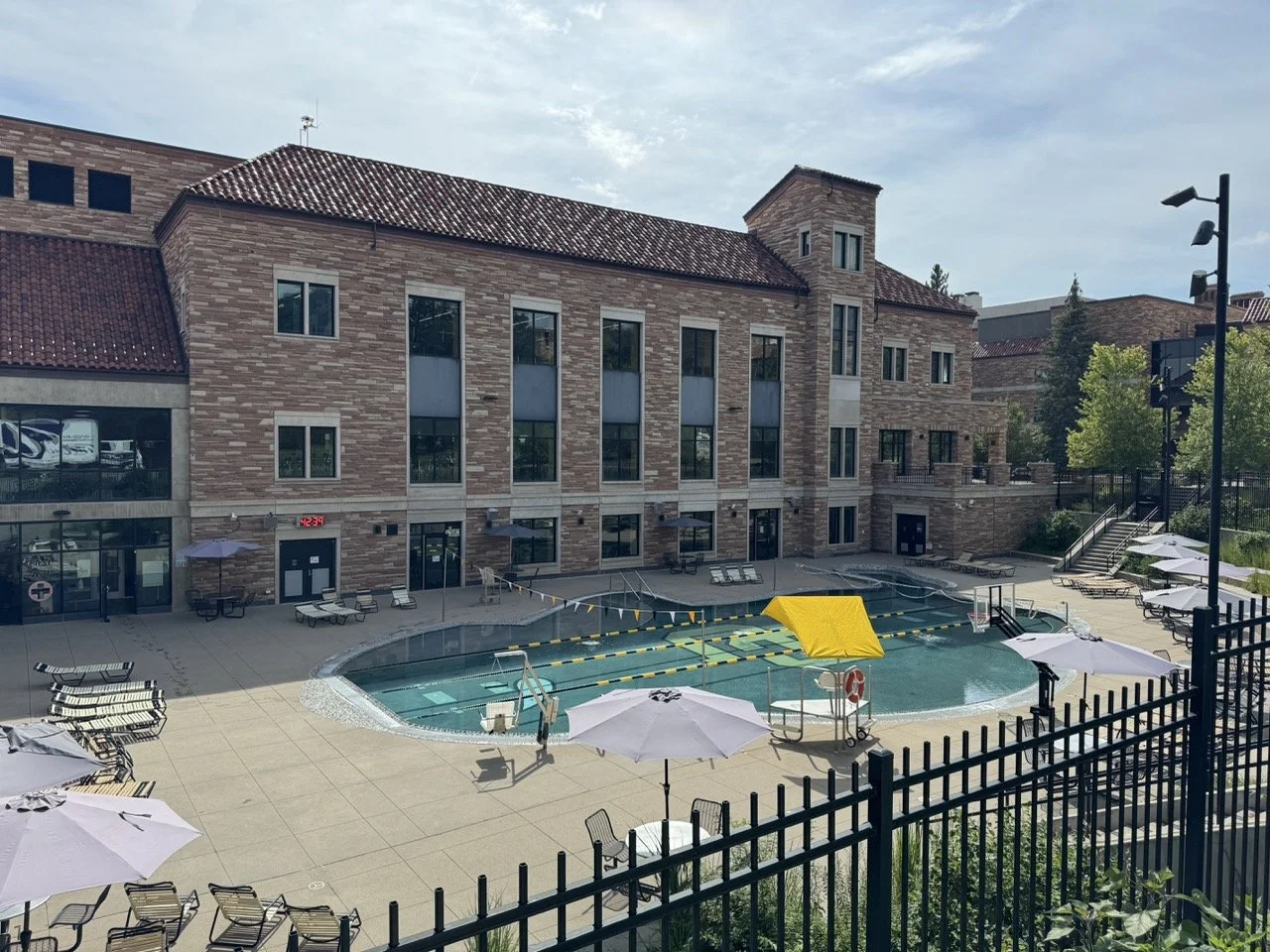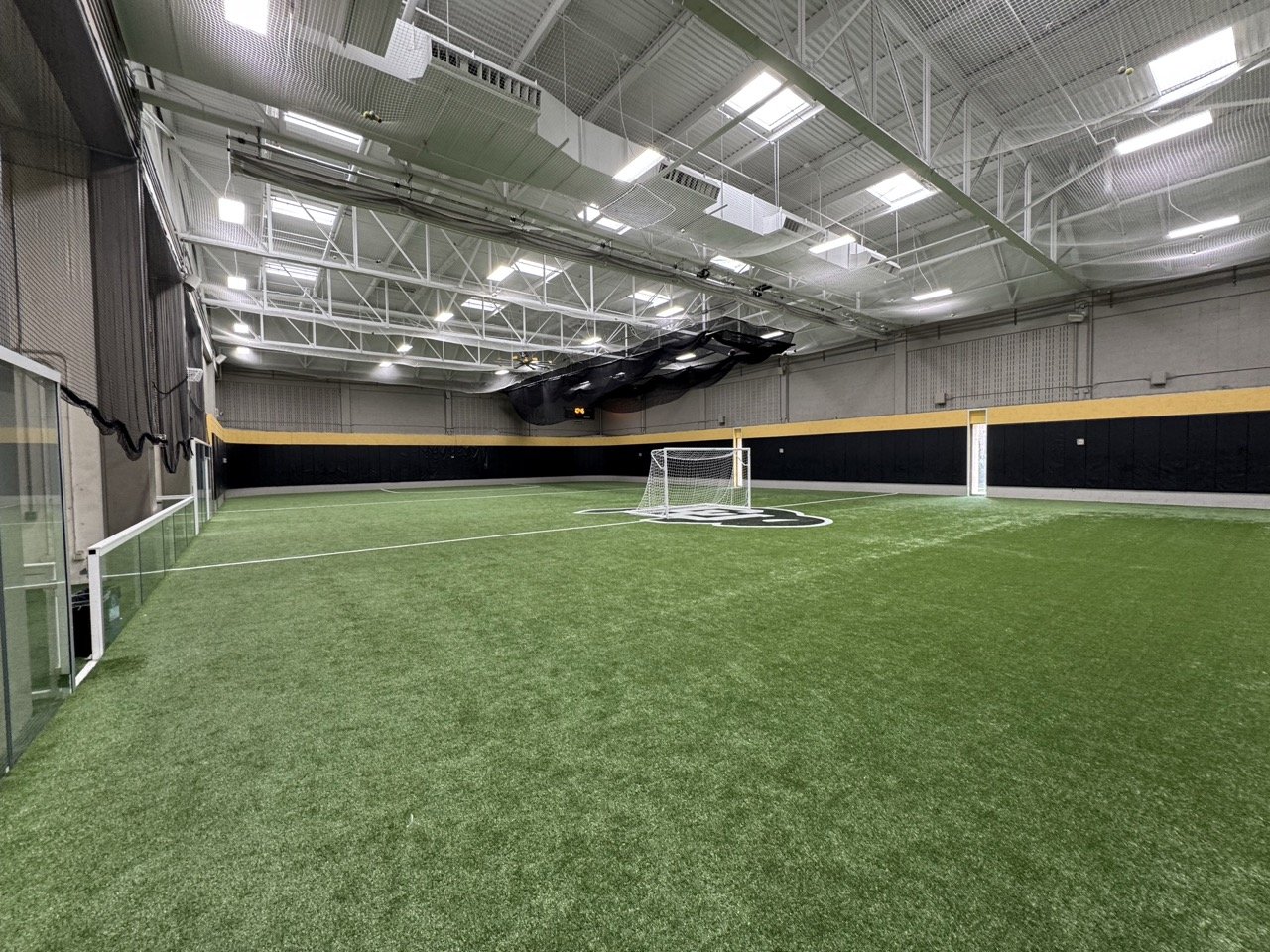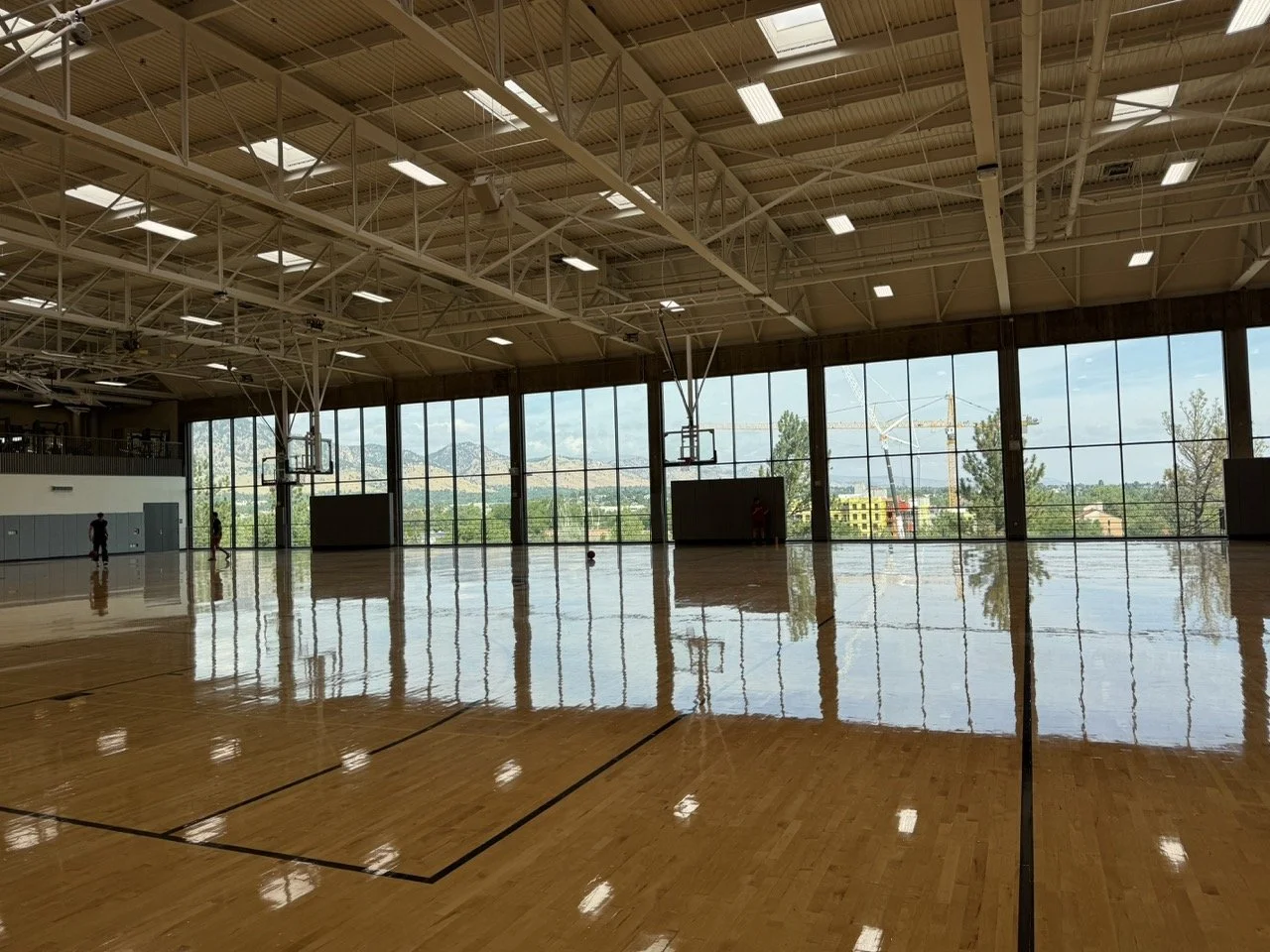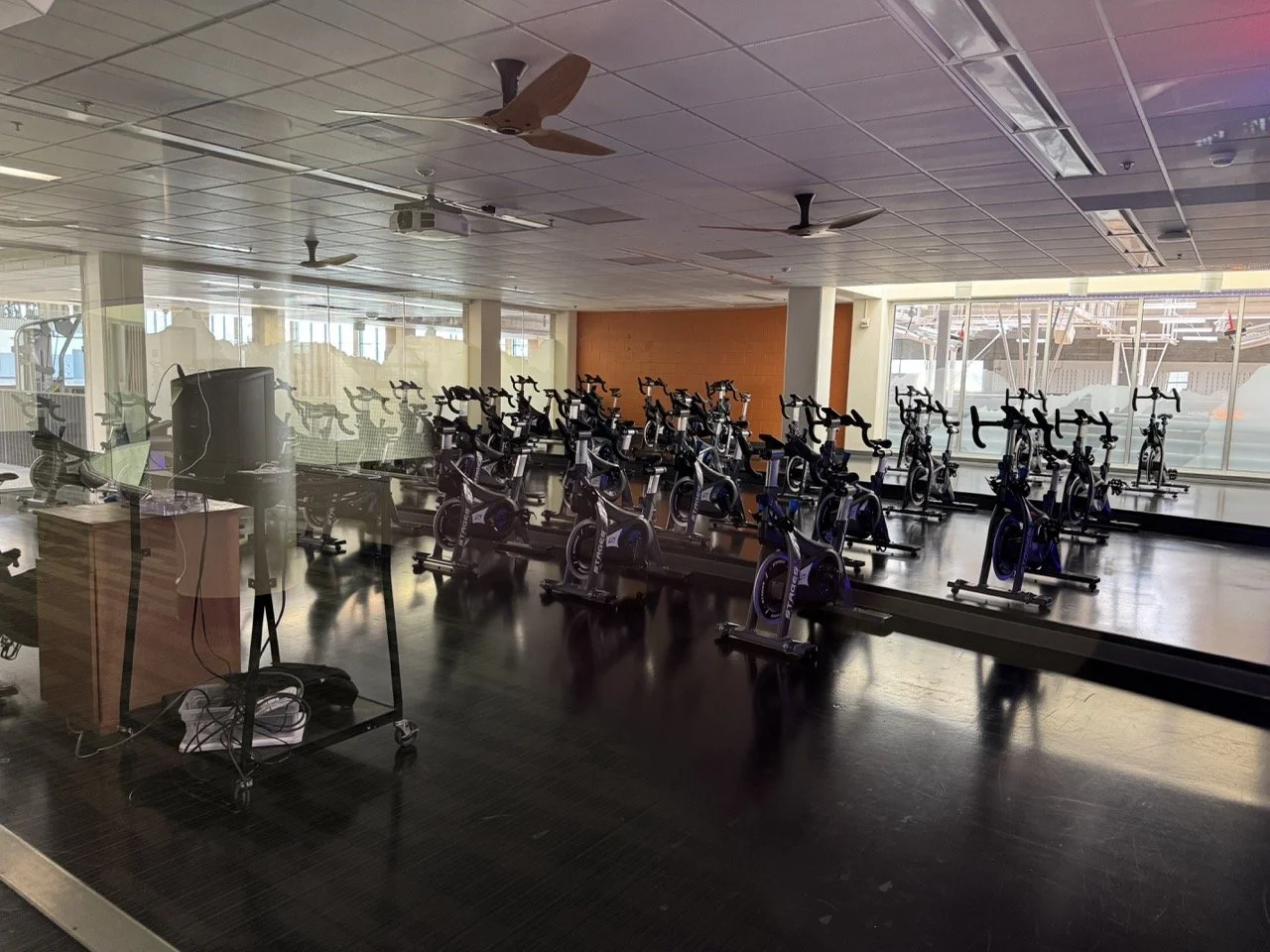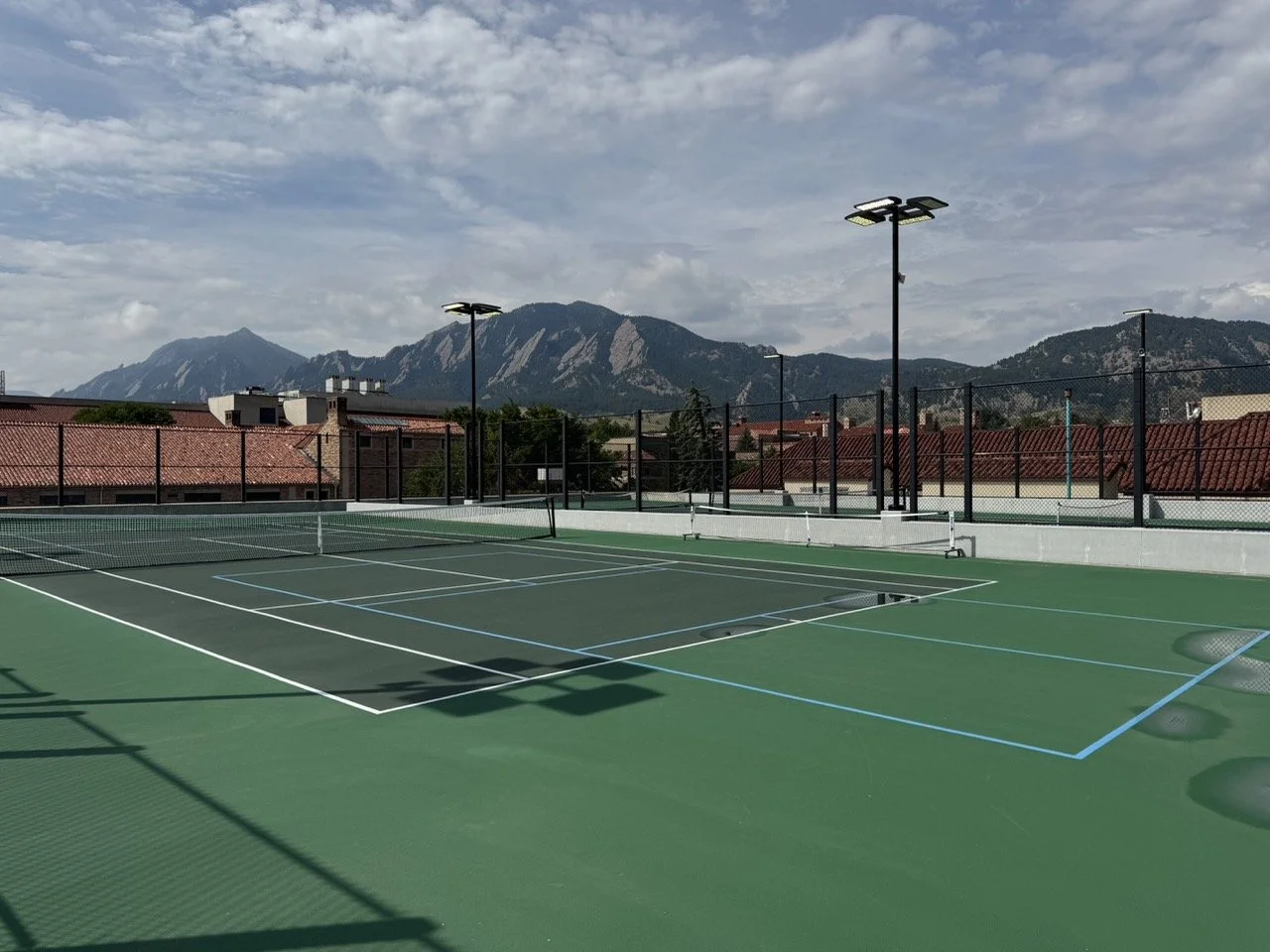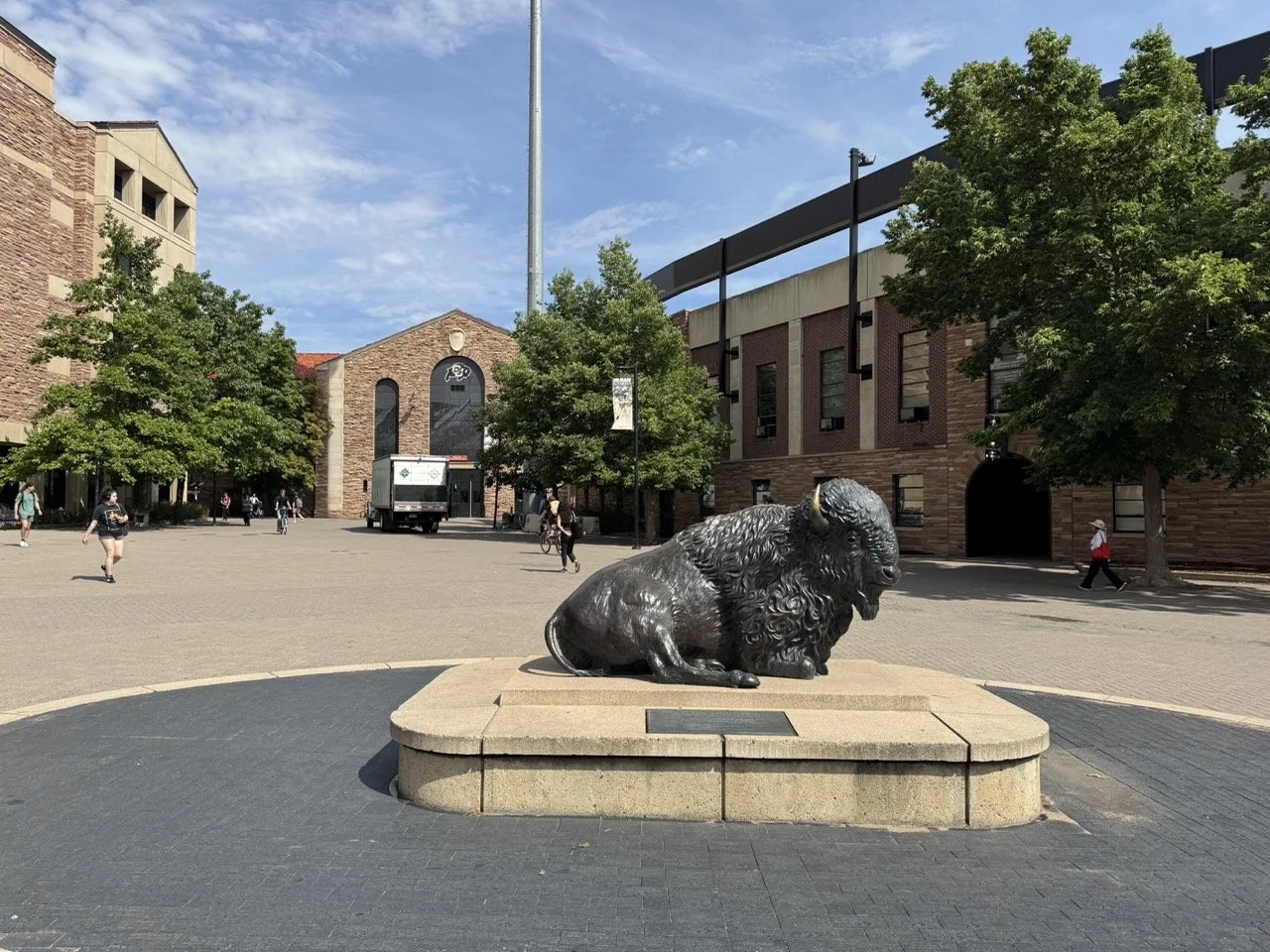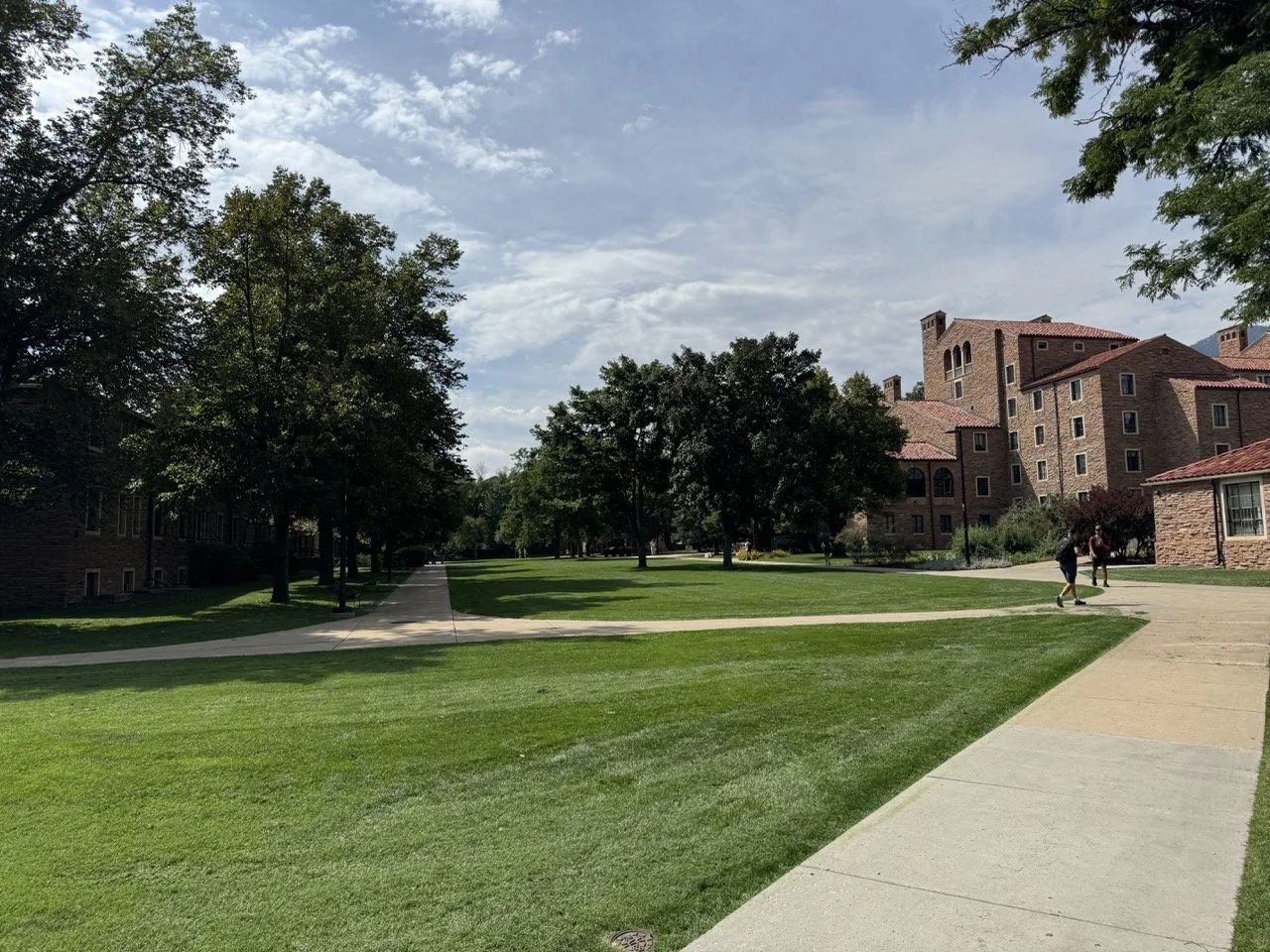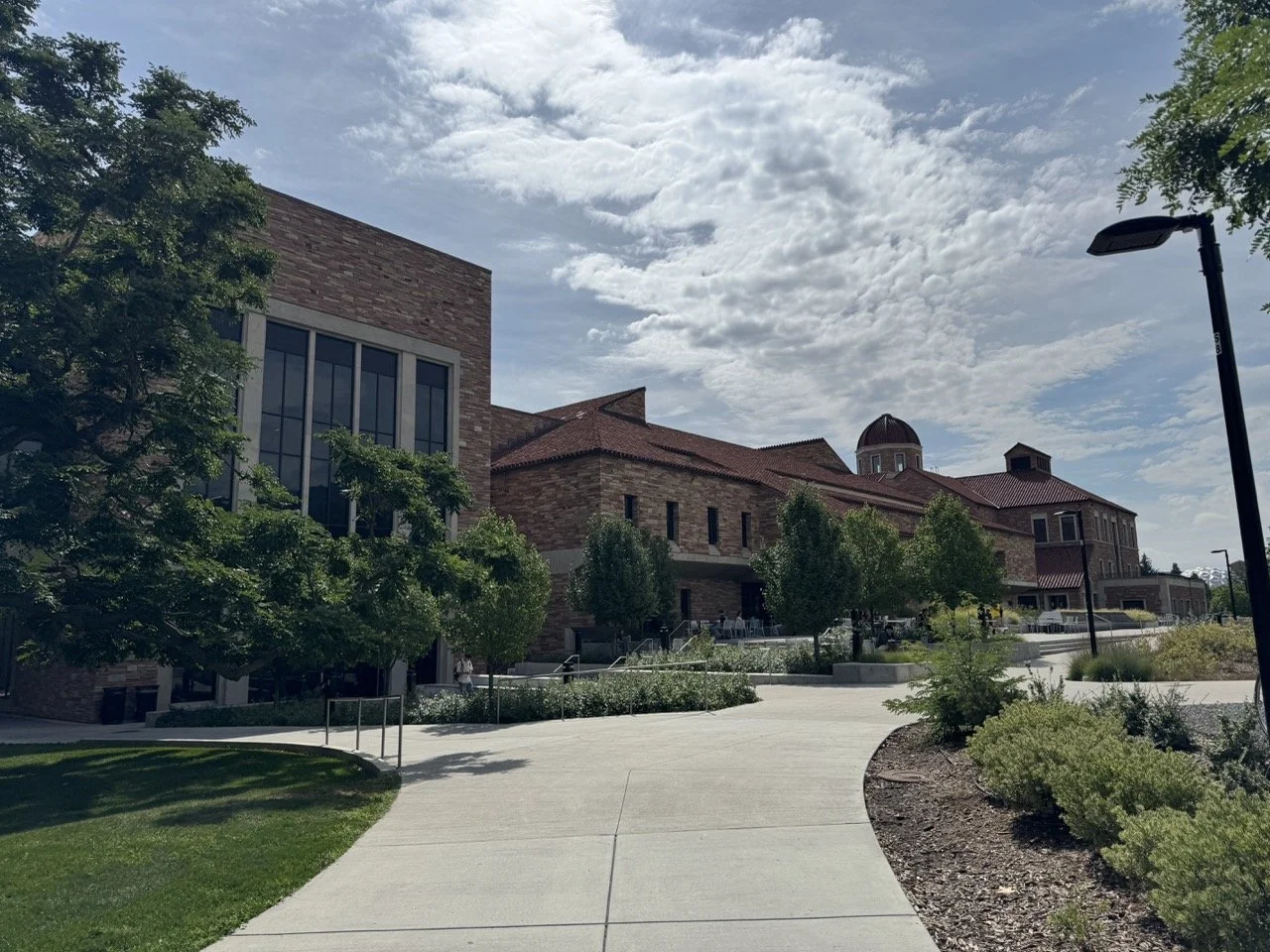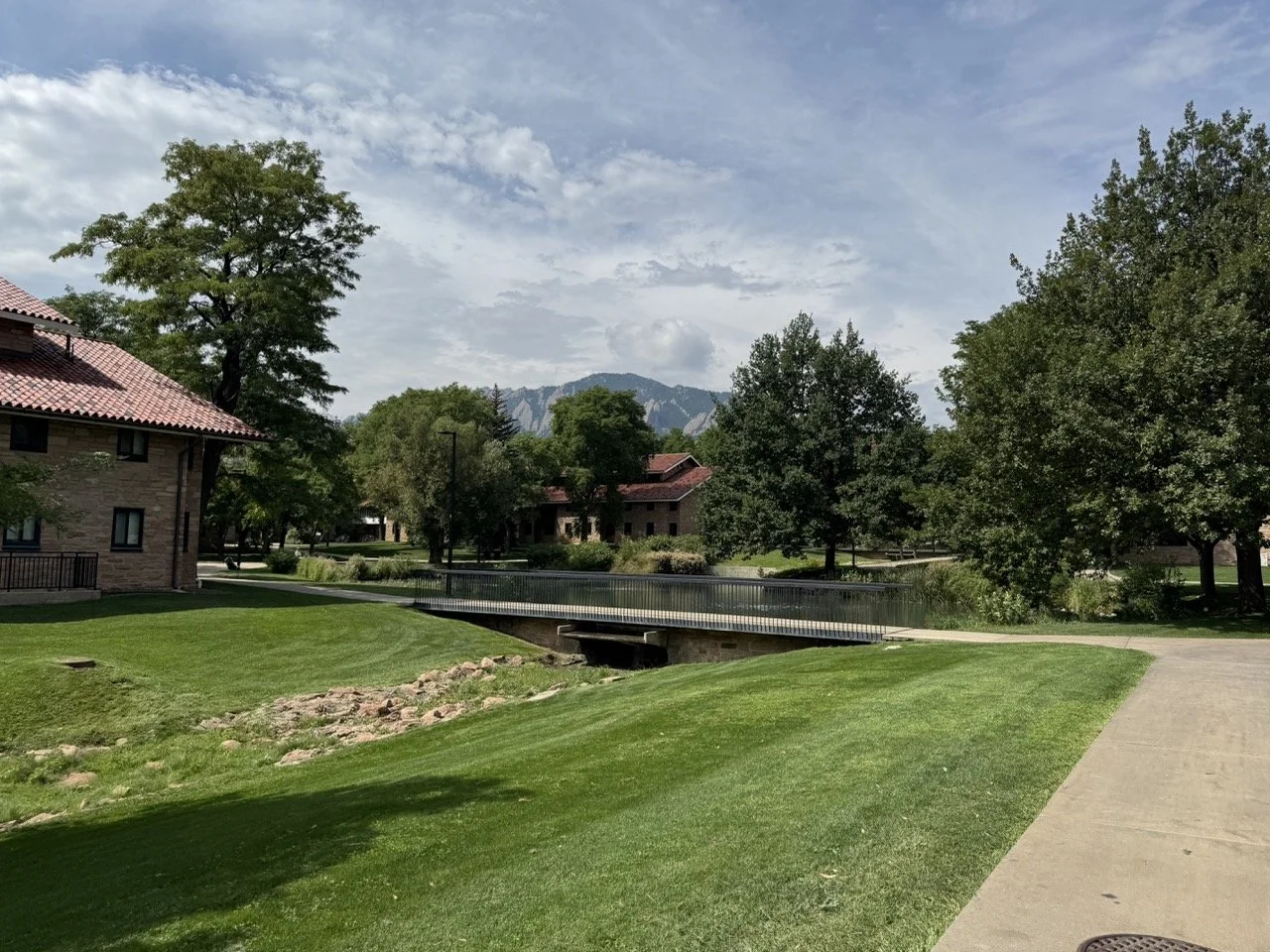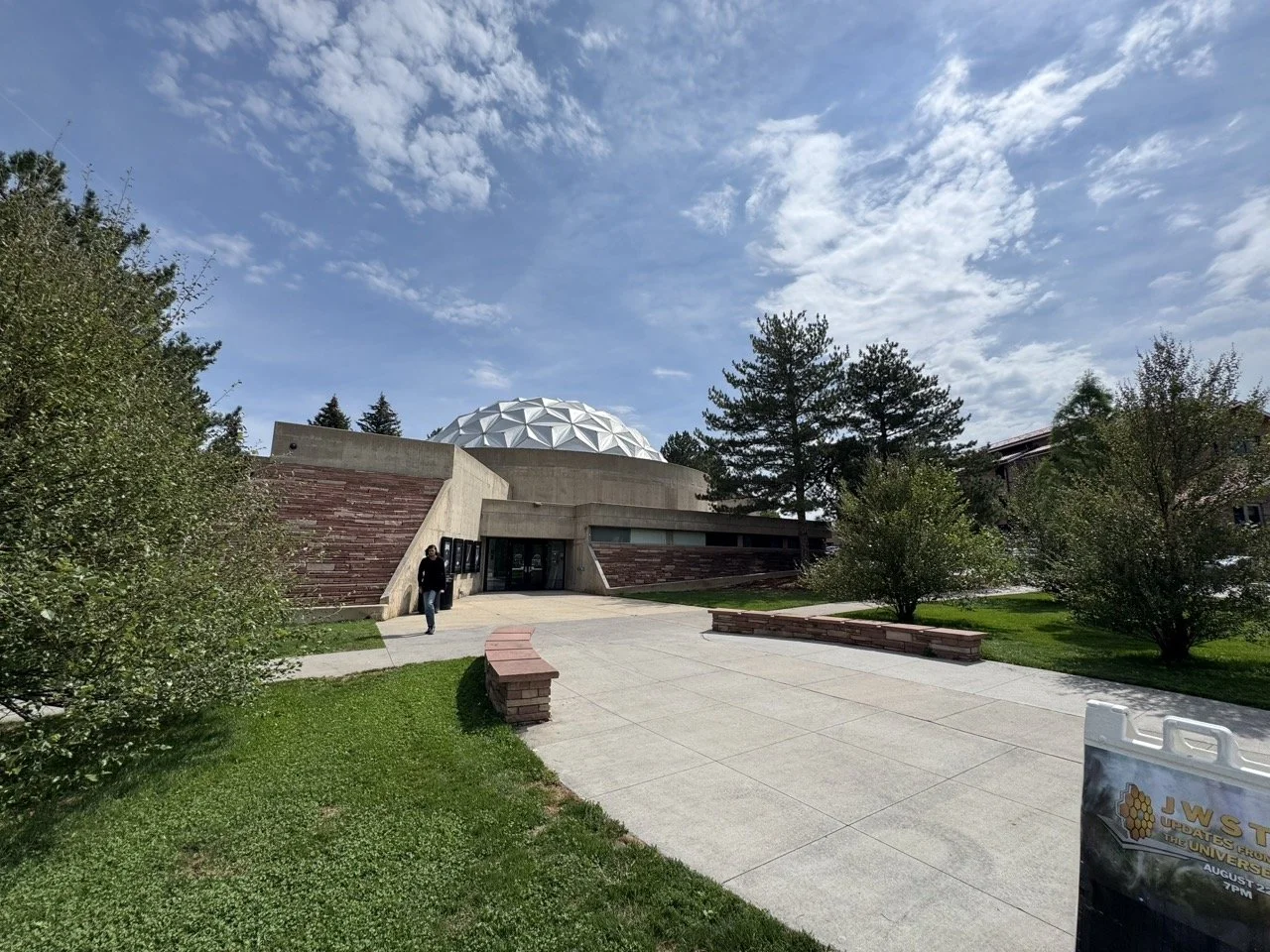Campus Tour: University of Colorado - Boulder
I try to visit 30–50 college campuses each year, and starting now, I’m going to share more of those experiences here on the blog. These posts will include my personal notes, impressions, and images from each stop - some practical, some purely observational. Whether you’re a prospective student, a parent, or just someone who enjoys exploring different college environments, I hope this campus tour series gives you a better sense of what these places are really like on the ground! I recently spent a week in Colorado visiting over 10 schools in Colorado and Wyoming, so you’ll be seeing many of those schools first.
CU Boulder: Big-School Energy, Flatirons Views, and Lots of Opportunity
CU Boulder is a flagship public research university set in outdoors-obsessed Boulder, Colorado. It’s the kind of place where you can walk from a lecture to a climb, then grab a latte at the UMC before a sunset study session. Below are the highlights I gathered on campus, plus the fine print on scholarships, majors, and what matters most in the application.
Admissions Snapshot & Strategy
Selectivity & ranges: BigFuture currently lists an acceptance rate ~76%, SAT 1180–1390, ACT 27–33 (middle 50% for those who submitted). The conversation I had with admissions from my visit showed GPA 3.72–4.25, SAT 1290–1460, ACT 30–34. Ranges can vary by college/major and by score-submission.
Apply directly to your first-choice major. CU evaluates you relative to your intended major, and you can’t change your major after you submit (until an admit decision is released). There is no downside to applying to your first-choice major, as it does not hinder your exploratory studies application if not selected for your first-choice major.
~55% in-state / 45% out-of-state. Recent CU updates highlight record in-state enrollment in Fall 2024, underscoring a strong Colorado presence alongside a robust national draw.
CU uses pathways:
Phase I: Admit to first-choice major (when possible).
Phase II: Admit to a pre-major (e.g., Pre-Business).
Phase III: Admit to Program in Exploratory Studies (PES) - a structured landing spot with advising to pursue the target college later. CU notes that many more students apply to Engineering and Business than there is capacity, and Leeds (Business) IUT decisions are space-available.
Engineering nuance: Direct admission is competitive; there are guaranteed transfer pathways (e.g., a 2024 agreement with Colorado Mountain College) and a formal Intra-University Transfer process for current CU students. Plan tightly if you’re pivoting majors.
Business nuance: Unlike Engineering, the business department will have capped space for IUT students, rather than a guaranteed pathway into the department.
Application tip from my conversation with admissions: For Business and Engineering, connect your soft skills (leadership, initiative) to tangible experiences that map to the major
Academics & Time to Degree
CU Boulder is a research-intensive (AAU) campus with 4,600+ courses across ~160 fields. Undergraduate students actively engage in the process of research and inquiry at the intensive level through projects and assignments in applicable majors and courses. Popular choices (from your visit and CU’s profile) include Business (Leeds), Engineering, and pre-health pathways. Changing into capacity-limited colleges can extend timelines; summer classes are a common strategy (as your notes suggest).
Leeds & Engineering: Capacity Realities (What Families Should Know)
Leeds School of Business: Entry is competitive; many students start in Pre-Business or PES and transfer in later. Admission is space-available, with published GPA/course benchmarks for pre-business students.
Engineering (CEAS): High demand; direct entry is competitive. There are structured IUT requirements and a guaranteed transfer route, both internally and from certain partner colleges (e.g., Colorado Mountain College).
Cost of Attendance (2025–26 estimates)
In-state tuition & fees (Base Rate): $14,606/yr
Out-of-state tuition & fees (Base Rate): $44,748/yr
Typical housing & meals (on-campus): ~$18,504/yr
Estimated resident total (base tier): ~$34,310/yr
(Higher tuition tiers apply to Business, Engineering, etc.)
Scholarships & How They Work
Automatic consideration: When you apply for admission, you’re automatically reviewed for CU Boulder’s first-year scholarships—no extra form at first. If you’re admitted, you’ll also unlock the separate CU Boulder Scholarship Application to apply for endowed and departmental awards.
Notable awards:
Nonresident (OOS) merit:
• Presidential Scholarship: $15,000/yr for years 1–2, then $12,500/yr for years 3–4 ($55,000 total).
• Chancellor’s Achievement: $6,250/yr (renewable; $25,000 total).
• Some majors (e.g., Arts & Humanities) have add-on awards.
Colorado residents: Esteemed Scholars ($4,000–$7,000 per year for four years).
Campus Life, Rec & Vibe
UMC eats: I spotted Starbucks, Panda Express, and Subway in the student union
Recreation Center: Think rooftop tennis/pickleball, an ice arena, indoor turf gym, and a big climbing/bouldering wall; the facility is LEED Platinum. The Rec center was PACKED with students when I was there, which makes sense for such an active community.
Final Thoughts
If you’re aiming at Business or Engineering, apply directly to that major and show fit. Your leadership and hands-on experiences matter. Expect competitive, space-limited seats in those colleges; PES provides a real path if Phase I fills up. On affordability, start with automatic merit, then mine the CU Boulder Scholarship Application for endowed and department funds after you’re admitted.
Bottom line: CU Boulder blends big-school resources, flat-out gorgeous surroundings, and a work-hard/play-hard student culture. If that mix feels like home, it’s worth a long look.

